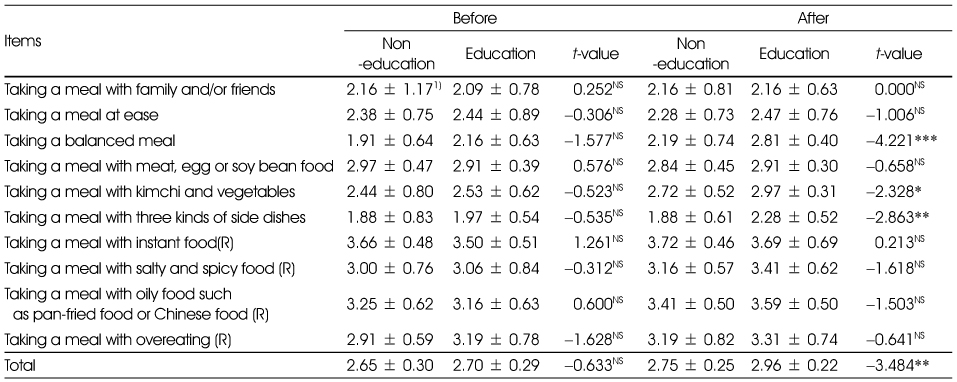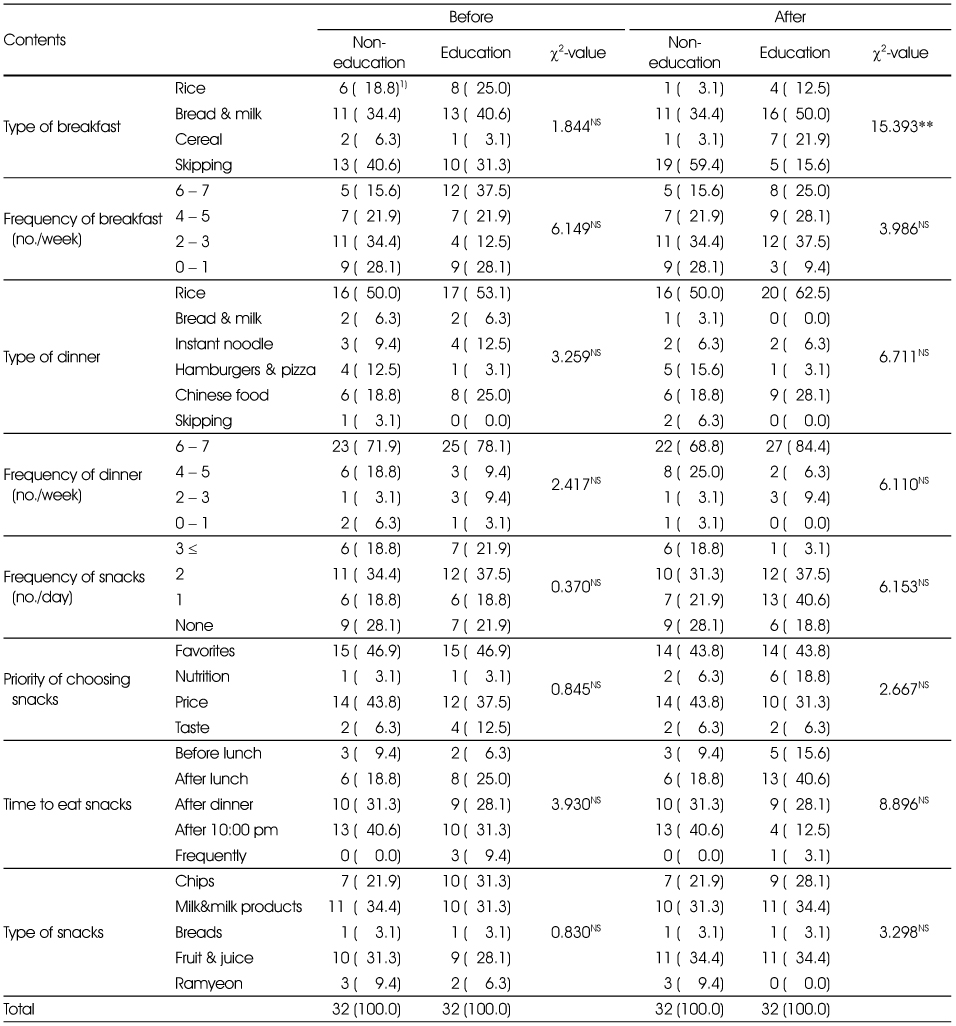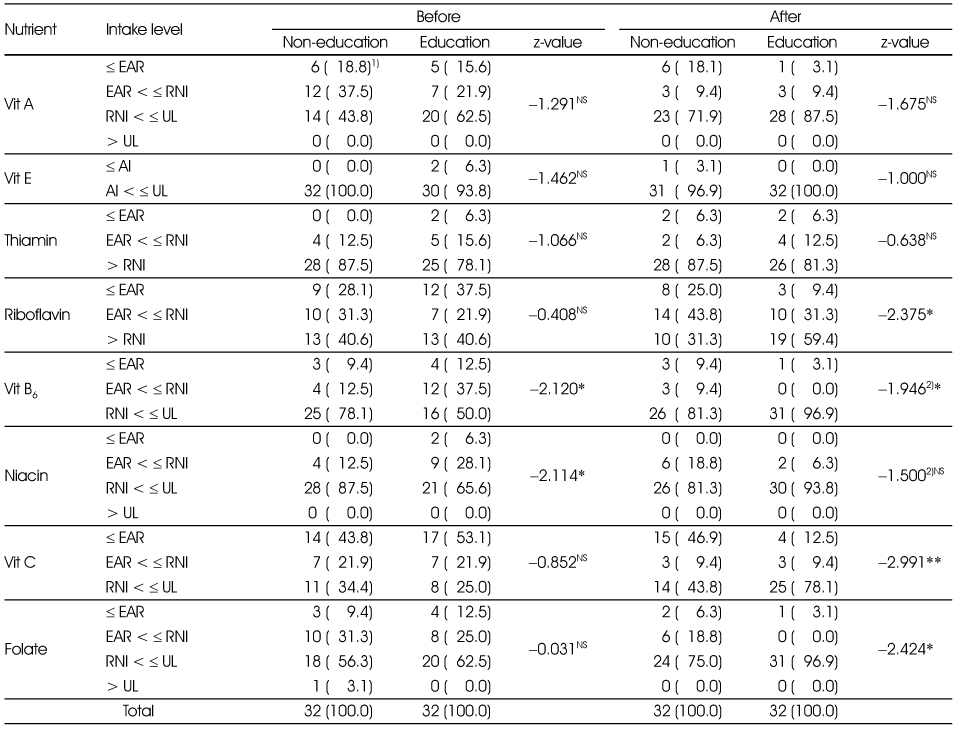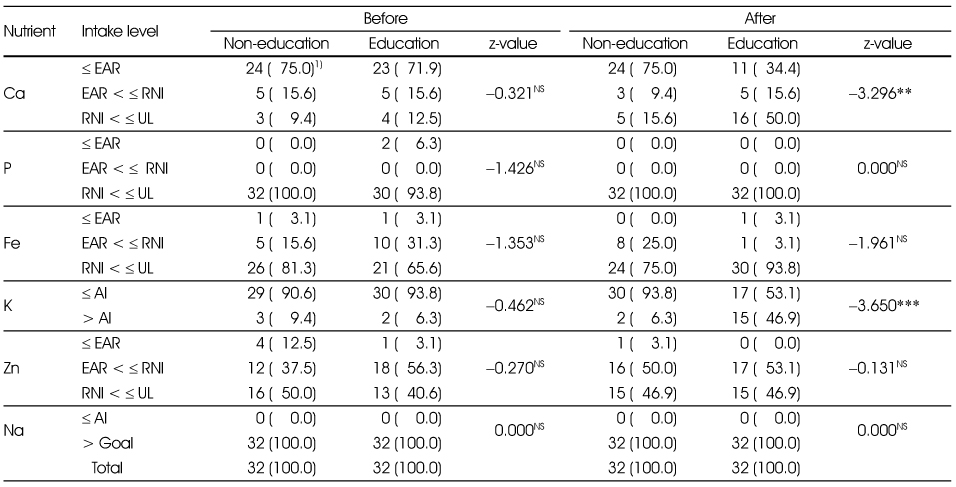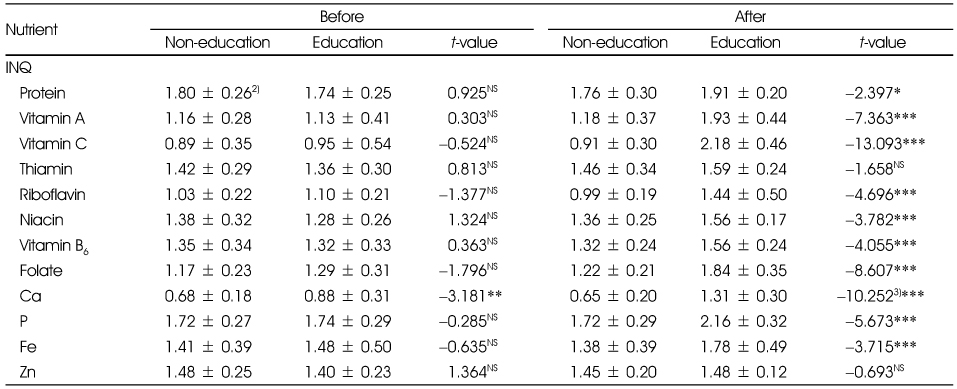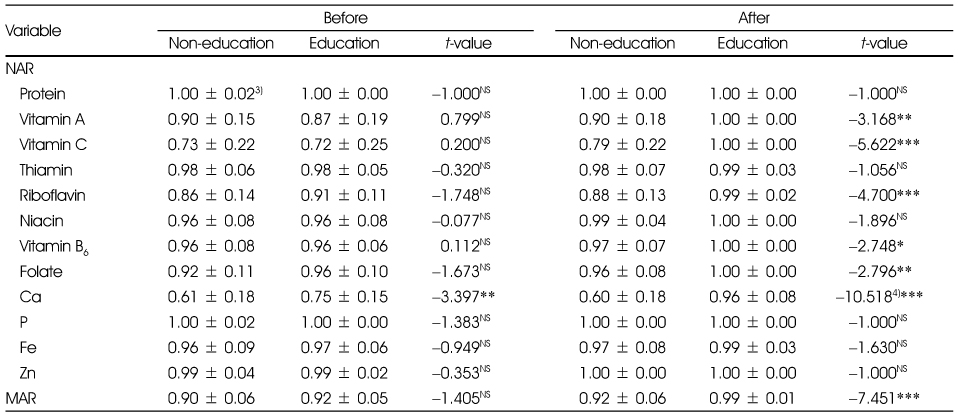References
1. Bea MS. Related factors with health behaviors of foreign students studying in Korea Yeungnam University; 2009. Dissertation.
2. Chang YK, Chung YJ, Moon HK, Yoon JS, Park HR. Nutritional assessment Seoul: Shingwang publishing Co.; 2001.
3. Choi HM, Kim JH, Lee ZH. Nutrition Paju: Kyomunsa; 2009. p. 304–305.
4. Choi HM, Kim JH, Lee ZH. Nutrition Paju: Kyomunsa; 2009. p. 268–270.
5. Eom HS, Jeong MJ, Kim SB. A study on nutrition knowlege, dietary attitude, food habit of middle school students in Chonbuk area. Korean J Community Nutr 2005;10(5):574–581.
6. Guo R. Relationship between perceived university environment and adjustment of university life by Chinese students in Korea Woosuk University; 2011. MS thesis.
7. Hong SY. Basic statistics Seoul: Hakjisa; 2004.
8. Kim BR. A study on nutrition knowledge, dietary habits, health-related life style and health condition of college student in Chunchen. J Korean Soc Food Sci Nutr 2006;39(9):1215–1223.
9. Kim BR, Han YB, Chang UJ. A study on the attitude toward weight control, diet behavior and food habits of college students. Korean J Community Nutr 1997;2(4):530–538.
10. Kim HK, Kim JH, Jung HK. A comparison of health related habits, nutrition knowledge, dietary habits, and blood composition according to gender and weight status of college students in Ulsan. Korean J Nutr 2012;45(4):336–346.
11. Kim KH. A study on the dietary habits, the nutritional knowledge and the consumption pattern of university students in the Gwangju area. Korean J Community Nutr 2003;8(2):181–191.
12. Kim SB, Choi JH. Effects of nutrition education using food exchange system: changes in elementary students' nutrition knowledge, dietary attitude and nutrients intake. Korean J Community Nutr 2008;13(6):922–933.
14. Koung SY. The effect of accumulative stress on depression and drinking problems among Chinese students in Korea CheongJu University; 2010. MS thesis.
15. Ku BS. Study on the current status and the application plan of nutrition education related websites Sungshin Women's University; 2007. MS thesis.
16. Lee EJ. A study on the accessibility and practical use of food and nutrition information from the internet KyungHee University; 2009. MS thesis.
17. Lee KS, Kim KN. Effects of nutrition education on nutrition knowledge, dietary attitudes, and food behavior of college students. Korean J Community Nutr 1997;2(1):86–93.
18. Lee MS, Chung KS. The comparison in daily intake of nutrients, quality of diets and dietary habits between male and female college students in Daejeon. Korean J Community Nutr 2006;11(1):39–51.
19. Lee NY, Han JY. Health status of international students in Korea. J East West Nurs Res 2011;17(1):48–56.
20. Lim ES, Cho YS, Kim SN, Kim SB. Development and effects' analysis of nutrition education pamphlet for the higher grades elementary students. Korean J Community Nutr 2012;17(6):689–706.
21. Merkus MP, Mathus-Vliegen LM, Broekhoff C, Heijnen AM. Extreme obesity: Sociodemographic, familial and behavioural correlates in the netherlands. J Epidemiol Community Health 1995;49(1):22–27.
22. Mei B. Related factors of acculturation and acculturative stress of Chinese student's studying in Korea Yeungnam University; 2010. MS thesis.
23. Ministry of Education. Foreign student statistics 2010. cited 2011 November 4. Available from
http://www.mest.go.kr.
24. Oh JY, Kim SB. Development and effects' analysis of nutrition education program for diabetes mellitus at community health center -Focused on individual daily energy requirementsand food exchange units-. Korean J Community Nutr 2010;15(4):485–497.
25. Shi MD, Kim DY, Kim JW. A study on eating habits, exercise habits and body perception according to body mass index among Chinese international students in Korea. J Leis Wellness 2012;3(1):31–42.
26. Son MJ, Cho YS, Kim SN, Seo HJ, Kim SB. Development and effects' analysis of nutrition education pamphlet for the lower grades elementary students. Korean J Community Nutr 2011;16(6):647–660.
27. The Korean Nutrition Society. Dietary reference intakes for Korean Seoul: Han-Arum Publishing Co.; 2010.
28. Tsugane S. Salt, salted food intake, and risk of gastric cancer: Epidemiologic evidence. Cancer Science 2005;96(1):1–6.
29. Wang Y. A study on academic adjustment of Chinese college students in Korea Myongji University; 2008. MS thesis.
30. Wu YF, Ma GS, Hu YH, Li YP. The current prevalence status of body overweight and obesity in China. Zhonghua Yu Fang Yi Xue Za Zhi 2005;39(5):316–320.
31. You JS, Chin JH, Kim MJ, Chang KJ. College students' dietary behavior, health-related lifestyles and nutrient intake status by physical activity levels using international physical activity questionnaire (IPAQ) in Incheon area. Korean J Nutr 2008;41(8):818–831.
32. Zhang JL, Liu XY, Lu HL, Li SY. An analysis and evaluation on nutrition education of college students. Chinese J Health Educ 2007;23(8):193–194.



